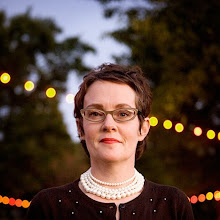
Me (car) visiting Kale (canon) in jail.
I played Monopoly on Thanksgiving Day with my nephew Kale Lund, we had a ball for at least two hours until he got bored. I had to read the rules again because it had been decades since I've played (but I did stick with my strategy of buying up utilities and most of the properties I landed on--some things you never forget).
There was a whole "other" section in the rules I didn't remember at all. They dealt with selling properties back to the bank if you get into a financial crunch, but only after you've sold off your houses and hotels. If your competitor buys your property, you get the best price you can get. If the bank takes it, you only get half of the property's original value. (I guess I wasn't the only kid not reading those rules, hmmm?)
I was reading "The Chronicle of Philanthropy" yesterday as part of my holiday reading package. There were articles about non-profits dealing with how to keep staff (and CEO!) morale up, how a non-profit theatre is adopting the practices of a co-op farm in up-state New York to stay solvent, and about a new group of foundations dedicated to lending money to non-profits to help them cover short-term and re-negotiate long-term debt. This is a new hybrid form of non-profit foundation that wants to stabilize our important non-profit sector, in all of its dimensions. (It looks like these were the kids who did read through the Monopoly rules!)
Lessons for me? Games that teach math skills do work; that you can inculcate a sense of mutual responsibility from a kid's youngest years; that greed ultimately tears a hole in our social fabric; and that moral responsibility takes many forms.
Kale and I were playing the Hawaii version of Monopoly. He owned Waikiki Beach, I owned the Mauna Loa Macadamia Nut Factory for a few non-binding hours. See? With fiscal discipline and hard work, dreams can come true (for individuals and non-profits).








